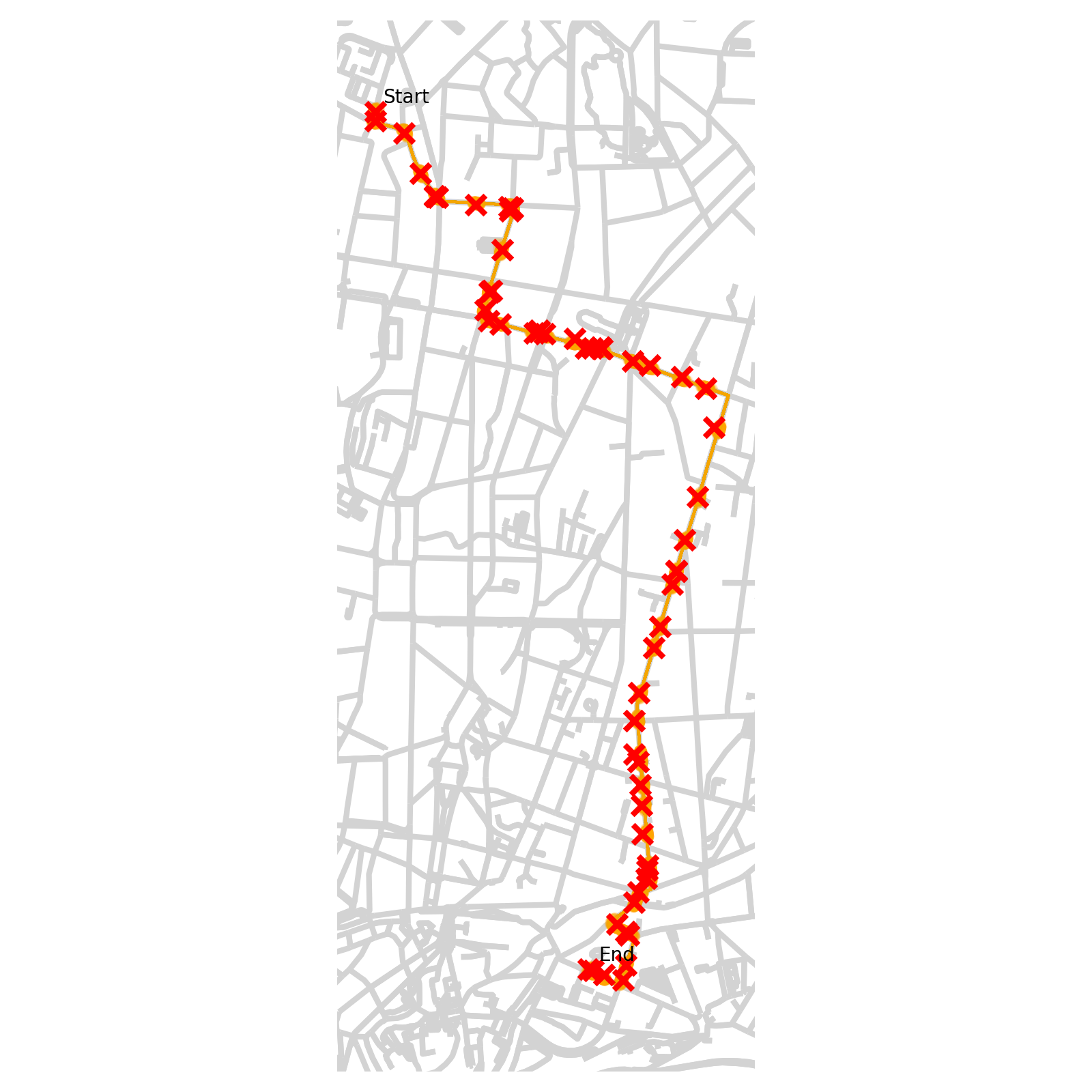Map-matching using particle smoothing methods.
Docs and methodology.
Contributing guidelines can be found in the repo's CONTRIBUTING.md file.
pip install bmm
UTM (Universal Transverse Mercator) is a commonly used projection of spherical longitude-latitude coordinates into square x-y coordinates.
import numpy as np
import pandas as pd
import osmnx as ox
import json
import bmm
graph = ox.graph_from_place('Porto, Portugal')
graph = ox.project_graph(graph)data_path = 'simulations/porto/test_route.csv'
polyline_longlat = json.loads(pd.read_csv(data_path)['POLYLINE'][0])
polyline_utm = bmm.long_lat_to_utm(polyline_longlat, graph)or generate fake data
fake_route, fake_polyline_utm = bmm.sample_route(graph, timestamps=15, num_obs=25)matched_particles = bmm.offline_map_match(graph, polyline=polyline_utm, n_samps=100, timestamps=15)# Initiate with first observation
matched_particles = bmm.initiate_particles(graph, first_observation=polyline_utm[0], n_samps=100)
# Update when new observation comes in
matched_particles = bmm.update_particles(graph, matched_particles, new_observation=polyline_utm[1], time_interval=15)bmm.plot(graph, particles=matched_particles, polyline=polyline_utm)@article{Duffield2022,
doi = {10.21105/joss.03651},
url = {https://doi.org/10.21105/joss.03651},
year = {2022},
publisher = {The Open Journal},
volume = {7},
number = {70},
pages = {3651},
author = {Samuel Duffield},
title = {bmm: Bayesian Map-matching},
journal = {Journal of Open Source Software}
}
